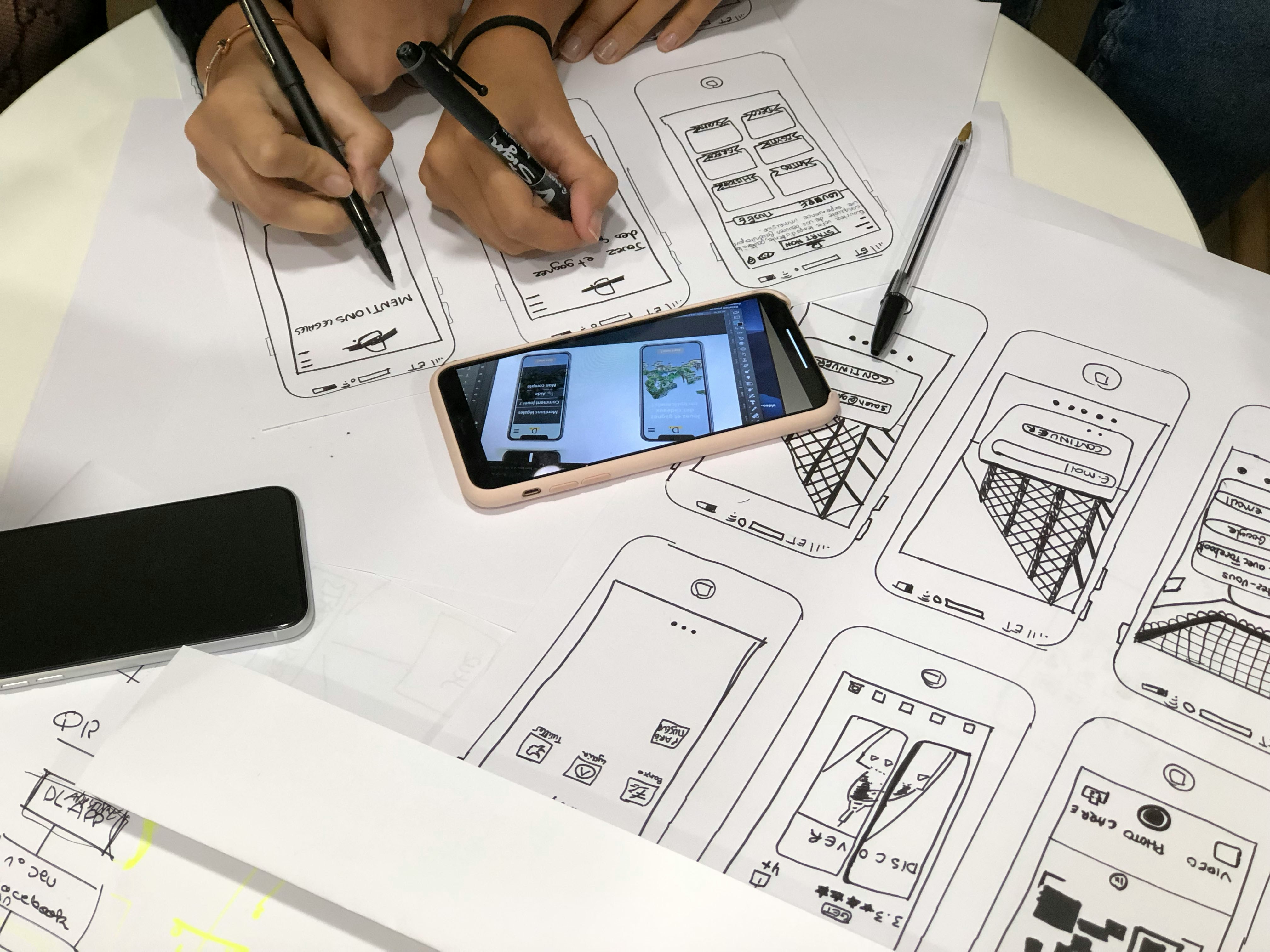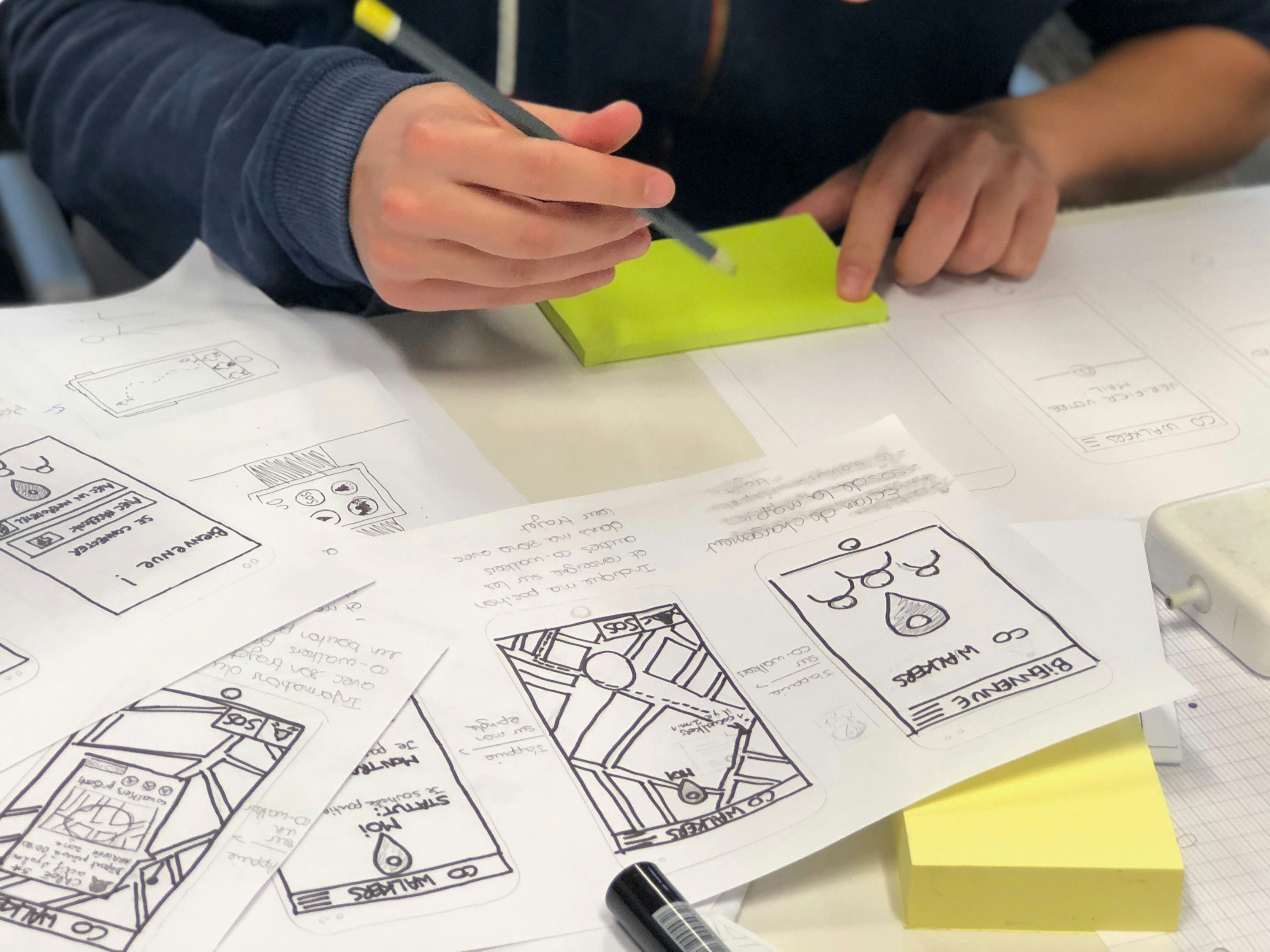.jpeg)
13/2/2025
End-to-end testing with Playwright
Disclaimer
Why E2E testing matters.
How to keep tests manageable.
Playwright’s biggest strengths.
Making tests stable and reliable.
Testing the right things.

What is end-to-end testing?
End-to-end testing (E2E) is a testing method that verifies if your application works correctly from start to finish. It simulates real user scenarios by automatically performing actions like clicking buttons, filling forms, and navigating between pages - just as a real user would do.
Think of it as having a robot methodically test your entire application, making sure all the pieces work together properly.
Why E2E testing is important
End-to-End (E2E) testing is a must-have in modern web development.
The more complex an application gets, the higher the chances something will break. And let’s be honest - users don’t care if it’s a frontend glitch, a backend issue, or an API failure. They just want things to work.
Good E2E tests do more than just catch bugs. They help prevent situations where a critical feature suddenly stops working, costing a company users and revenue. The earlier an issue is caught, the cheaper it is to fix.
This is especially important in a world where continuous deployment (CI/CD) is the norm. With code changing constantly, tests need to keep up. A solid E2E test suite lets development teams move fast without fear that every new release will break something. In short, it saves time, money, and a whole lot of stress.
Key principles of effective E2E testing
- Comprehensive test coverage
E2E tests should simulate actual user journeys, covering critical paths and edge cases. This means testing not just the happy path, but also error scenarios, different user roles, and various environmental conditions. - Maintainability and scalability
The most critical aspect of E2E testing is creating a test suite that remains manageable as your application grows. This requires a thoughtful approach to test structure and organization.
What is Playwright?
Playwright is the tool that makes this automation possible. It's a powerful framework that can control web browsers and perform these user-like actions automatically. What makes Playwright special is its ability to work across different browsers (Chrome, Firefox, Safari) while providing smart features that make tests more reliable and easier to write.
Optimal project structure for Playwright tests
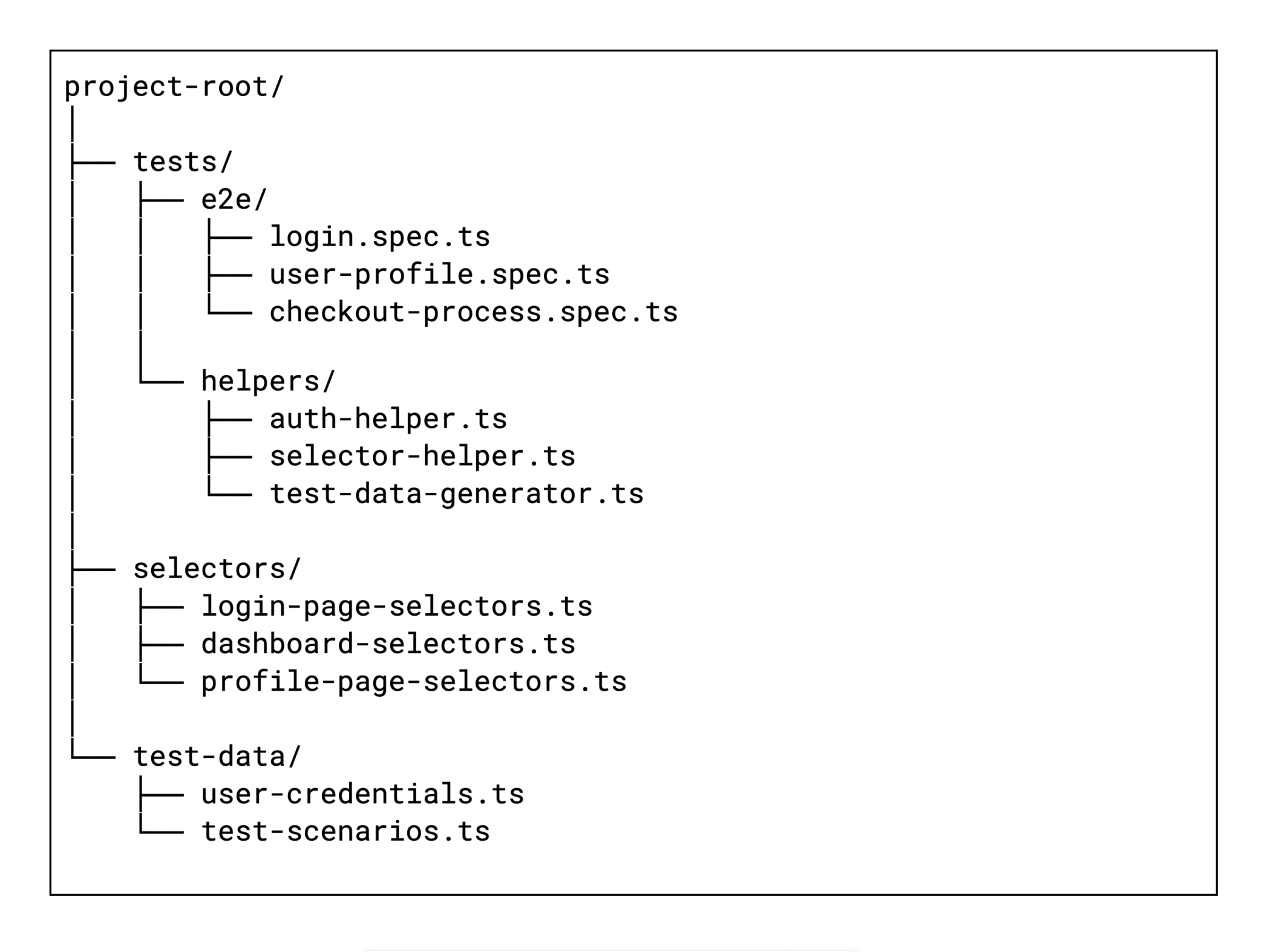
Best practices for structuring Playwright tests
1. Centralized selector management
Store all element selectors in separate files to:
- Improve maintainability
- Reduce duplication
- Make selector updates easier
- Separate concerns
Example of a selector helper:

2. Helper functions and utility files
Create reusable helper functions to:
- Reduce code duplication
- Improve test readability
- Simplify complex interactions
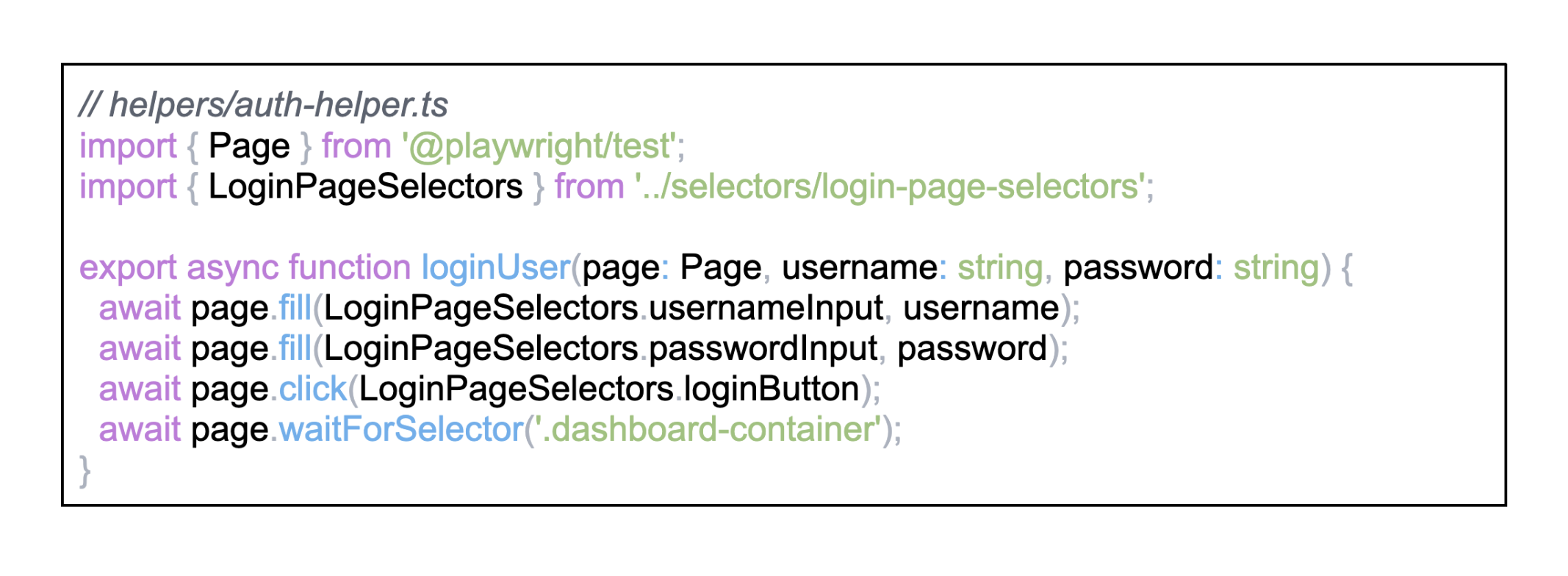
3. Test data management
Separate test data from test logic to:
- Improve test flexibility
- Make scenario generation easier
- Allow easy data modifications
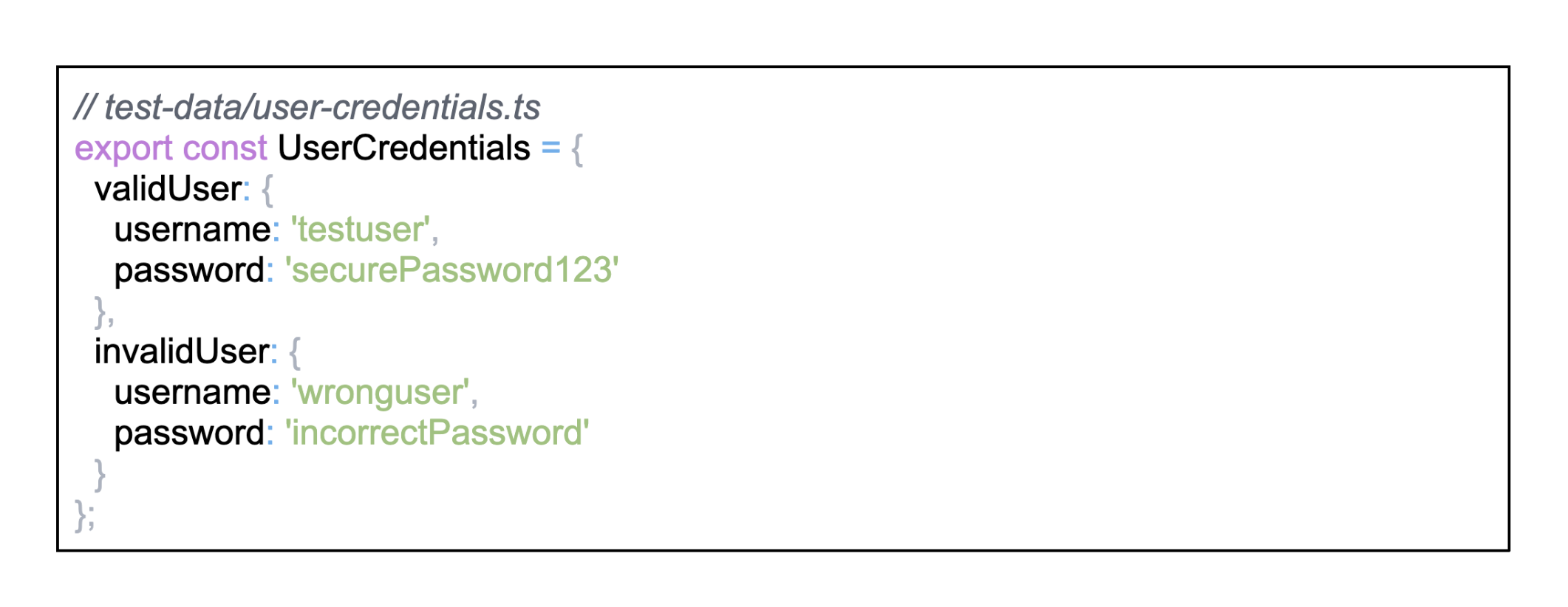
Playwright's role in modern testing
Playwright has quickly become a go-to tool for E2E testing, solving many headaches that come with automated testing. It works seamlessly across Chromium, Firefox, and WebKit, making it easier to ensure an app behaves consistently no matter what browser users prefer.
What really makes Playwright stand out is how smart it is with automation. Built-in auto-waiting and intelligent handling of dynamic elements mean fewer flaky tests and less time spent fixing random failures. That kind of reliability is a game-changer when building test suites that actually do their job without constant babysitting.
Building a sustainable test architecture
Effective E2E testing isn’t just about writing tests that pass - it’s about building a test setup that won’t become a nightmare to maintain. A solid test architecture makes it easy to update and scale tests as the application evolves.
The key is keeping things organized. Instead of cramming everything into huge test files, a good approach is to separate concerns: page interactions, test data, and test logic should each have their own place. This way, when something changes, developers can update just the relevant part without breaking everything else. It also cuts down on duplicated code, making the whole suite easier to manage.
Ensuring test stability
Keeping E2E tests stable is one of the hardest parts of the job. Flaky tests that fail randomly don’t just waste time - they make the whole test suite feel unreliable. A big part of stability comes down to handling async behavior, network requests, and dynamic content the right way.
Playwright helps a lot with its built-in waiting mechanisms, but how you use them matters. Tests should wait for real conditions - like elements appearing or network requests finishing - instead of relying on fixed delays. Element selectors also need to be flexible enough to handle UI changes without breaking every time a class name gets tweaked. Small details like these make all the difference in keeping tests solid and maintainable.
Advanced testing considerations
Modern web apps need more than just functional tests. Visual testing helps catch UI issues across different devices and browsers, making sure everything looks as it should. Performance testing within E2E tests can highlight slowdowns in key user flows, while security checks are essential for apps dealing with sensitive data.
These advanced tests should be implemented with a clear purpose. The goal isn’t to test everything imaginable - it’s to focus on what actually matters for your application. Well-defined objectives and acceptance criteria help keep testing efficient and valuable rather than overwhelming and unnecessary.
Developing an effective testing strategy
A successful E2E testing strategy must balance coverage, execution time, and maintenance effort. Rather than attempting to test every possible scenario, focus should be placed on critical user journeys and high-risk areas of the application. This targeted approach ensures that testing efforts provide maximum value while remaining manageable.
The strategy should also consider how tests will be executed in different environments, how test data will be managed, and how results will be reported and acted upon. These operational considerations are crucial for the long-term success of your testing efforts.
Continuous improvement and adaptation
Web development never stands still, and testing strategies need to keep up. Regularly reviewing and refining test suites helps keep them effective and efficient. This means cutting redundant tests, updating outdated methods, and integrating new testing capabilities as they become available.
Test maintenance isn’t a one-and-done task - it’s an ongoing process. Ignoring it leads to technical debt, where outdated or flaky tests slow everything down instead of providing value. Keeping test suites in good shape ensures they stay useful and don’t become a burden over time.
Wrapping up
E2E testing with Playwright is an investment in application quality that pays off in reliability and confidence. But success isn’t just about technical skills - it requires smart test architecture, a clear implementation strategy, and ongoing maintenance to keep tests useful over time.
Focus on testing what matters, keep your test suite organized, and don't forget to maintain it over time. Do this right, and you'll have a test suite that helps you ship better code faster, instead of slowing you down with constant maintenance.
Remember, the goal isn't to test everything under the sun – it's to test the things that matter, in a way that's sustainable and actually helps your team move faster with confidence.
If you found the topic of testing with Playwright interesting, you might also enjoy our thoughts on team collaboration - like in “6 communication habits that seem harmless… but quietly kill your IT project”. It’s a good read even when everything seems to be running smoothly.
Still debating whether to go cross-platform? In “When and how is it worth building one app for all devices…” Arkadiusz breaks down the decision from both a technical and business angle.
And if you already have an idea in mind and want to see how we bring things to life, take a look at our portfolio. It might help you in some way.




.svg)



